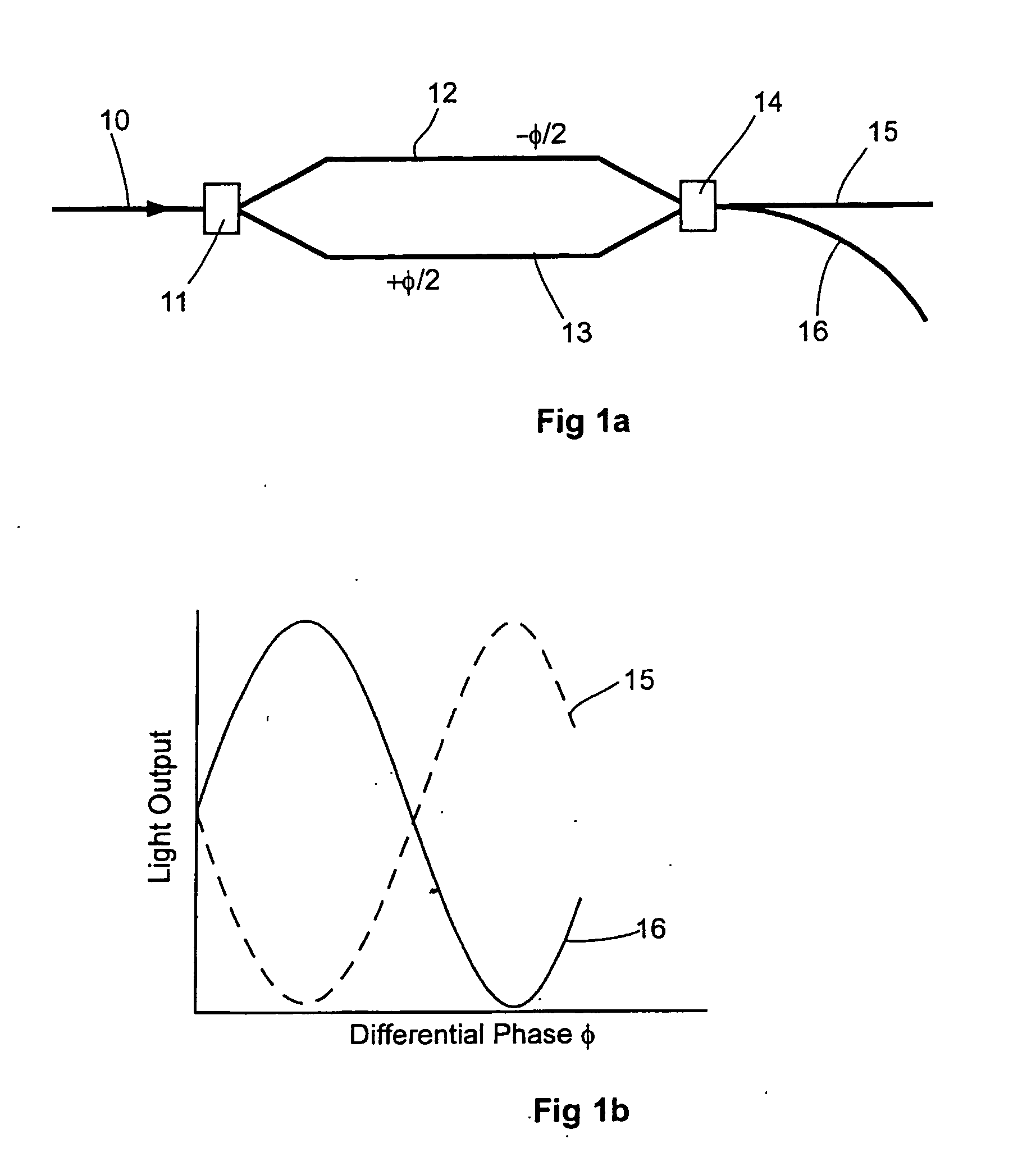Electro-optic modulators incorporating quantum dots
a quantum dots and optical modulator technology, applied in optics, instruments, nanotechnology, etc., can solve the problems of limited use in the telecom system, no universally accepted and adopted nomenclature for these types of materials, and the ferroelectric material lithium niobate is unsuitable for monolithic integration, etc., to improve the performance of electro-optic modulators, shorten the voltage, and improve the linear electro-optic effect
- Summary
- Abstract
- Description
- Claims
- Application Information
AI Technical Summary
Benefits of technology
Problems solved by technology
Method used
Image
Examples
Embodiment Construction
[0055] The invention will now be described with reference to the accompanying drawings of which:
[0056]FIG. 1a. is a plan schematic view of a Mach Zehnder Interferometer (MZI),
[0057]FIG. 1b. is a graph of light output vs. differential phase,
[0058]FIG. 2a. illustrates a cross section of a part of a series push-pull modulator based in semiconductor,
[0059]FIG. 2b. shows a cross section of a part of a series push-pull modulator based in semiconductor detailing the guided light profiles, and
[0060]FIG. 3. is a graph of the values r and s against wavelength λ.
DETAILED DESCRIPTION OF THE EMBODIMENTS
[0061] For ease of understanding, the invention will firstly be described with reference to an MZI format modulator, although it has wider uses than in MZIs alone and may be used in a variety of other known electro-optic modulator systems as described in Chapter 9, “Optical Electronics in Modern Communications”, A Yarif, Oxford University Press, ISBN 0-19-510626-1.
[0062] Referring to FIG. 1...
PUM
 Login to View More
Login to View More Abstract
Description
Claims
Application Information
 Login to View More
Login to View More - R&D
- Intellectual Property
- Life Sciences
- Materials
- Tech Scout
- Unparalleled Data Quality
- Higher Quality Content
- 60% Fewer Hallucinations
Browse by: Latest US Patents, China's latest patents, Technical Efficacy Thesaurus, Application Domain, Technology Topic, Popular Technical Reports.
© 2025 PatSnap. All rights reserved.Legal|Privacy policy|Modern Slavery Act Transparency Statement|Sitemap|About US| Contact US: help@patsnap.com



